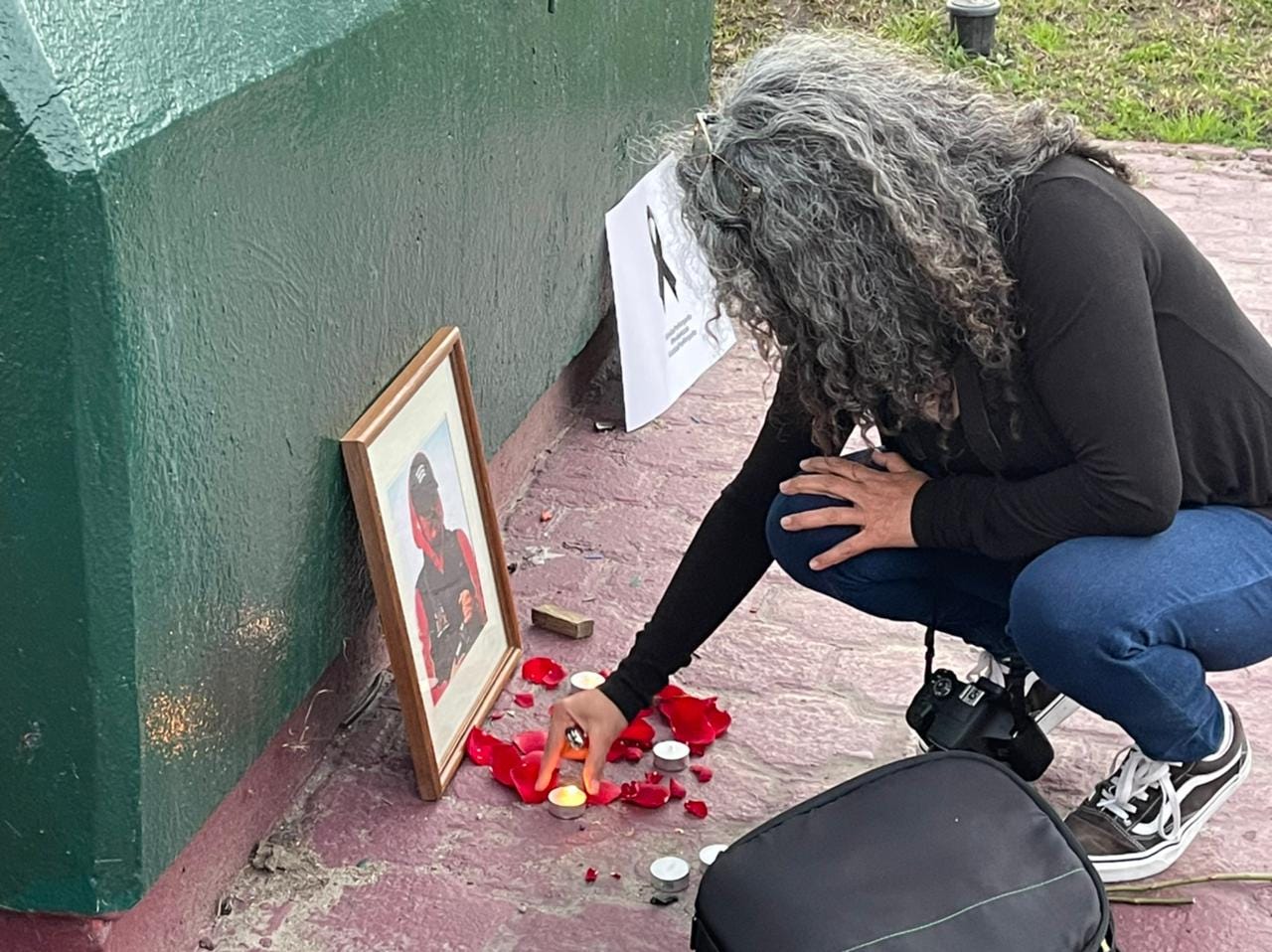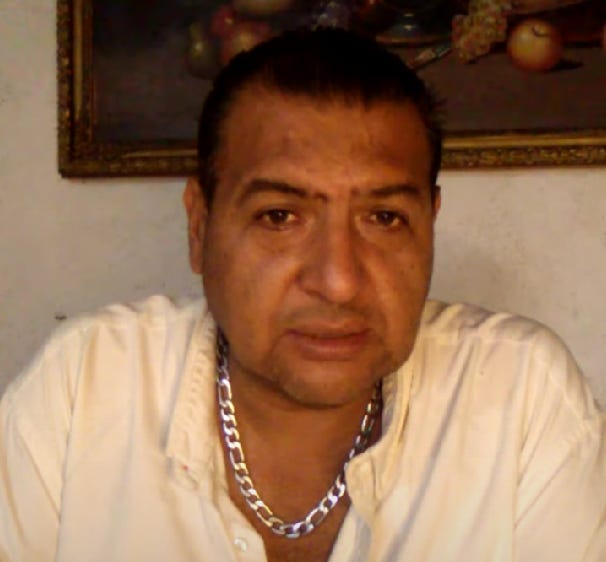Mexico Press Freedom Roundup, Week 3, 2022
Two murders usher in a violent year for Mexican journalists. A third reporter was attacked by a knife, while the government says it wants to overhaul federal protection laws.

First, a note from the author.
This is the very first entry to Plumas Bajo Fuego, and if you are receiving this, it means you have succesfully subscribed to this newsletter, for which I thank you.
It was initially my intention to formally introduce myself and the purpose of this newsletter, but as it is Friday and lots has happened it week, I decided to instead cut to the chase immediately with what I intend to be a weekly briefing on press freedom and journalism in Mexico. A formal introduction will be coming soon.
The Mexico Press Freedom Roundup will be an integral part of Plumas Bajo Fuego; its aim is to be a weekly briefing, sent to my subscribers every Friday, with a brief recapitulation of the most important events of the week. Whenever possible, I will provide useful links and further details about each entry in the briefing (be aware that most of them will be in Spanish!).
This is, of course just the first entry and the format may be subject to substantial change the near future, which will also depend on your responses as readers. Please feel free to leave a comment
For now, thank you again for subscribing. And if you haven’t, you can do so now.
A violent start of the year
On January 14, the body of reporter José Luis Gamboa was identified by his family in the city of Veracruz, the eastern Mexican state that hugs the coast of the Gulf of Mexico. His body had actually been found four days prior in the Floresta neighborhood of the port city of Veracruz. According to initial reports in local media, he had been stabbed several times.
More than two weeks after his death, little is known about the circumstances of the murder. Gamboa was the founder and editor of Inforegio, a news website, as well as a former editor of newspaper La Noticia. He nevertheless published mostly on his personal Facebook page and regularly posted videos on YouTube. In his last post on Facebook, published on the day of his death, he summed up a series of brutal murders in the towns surrounding Veracruz, which he attributed to criminal gangs. “The circle is closing”, he warned, criticizing Veracruz state and warning that organized crime was getting the better of the government.
"For the narcos, the only borders are the ones they establish,” he wrote.
The Veracruz state authorities themselves, meanwhile, have not publicly said anything about the murder, the motive or if there is a even a suspect. Initial news stories attributed the murder to a robbery, but Israel Hernández, the executive secretary of the Veracruz State Commission for Attention to and Protection of journalists (CEAPP), an autonomous state government agency, has his doubts.
“He was struggling financially and from what I was told he wasn’t carrying any money,” he told me. “It’s also difficult for me to believe that no one in the neighborhood noticed a fatal robbery.”

Tijuana mourns one of its finest
Journalists in Mexico and beyond were shocked when Margarito Martínez, a 49-year old photographer in the northern border state city of Tijuana, Baja California state, was shot dead just after noon on Monday. A veteran reporter with more than twenty years of experience, Martínez was widely known for his specialty: taking photos of crime scenes and violence; his colleagues described him as a kind, highly professional journalist. He often worked with foreign reporters.
He had no shortage of work for the numerous outlets that published his work, among them Zeta Tijuana, Cadena Noticias and La Jornada de Baja California, either. Tijuana has a long history of gangland warfare and brutal clashes between criminal groups. The violence steadily worsened over the past few years; at least 1932 people were murdered in the city last year alone, according to government figures, an average of more than five every day.
Although some news stories initially reported that Martínez may have been killed in an altercation with neighbors, the Baja California state prosecutor’s office told local reporters on Tuesday that this may not have been what happened. One colleague who knew Martínez well, told me that he had returned from an assignment in the morning, went to his home to freshen up and to hit the street again to cover another event.
“This is how he always worked,” his friend and colleague, who asked not to be named out of concerns for his safety. “He would listen to the radio frequency of the Red Cross to decide where to go next, take photos and then send those to the newspapers, hoping they would be published.”
Baja California’s state prosecutor’s office (FGE) told local journalists on Tuesday that Martínez was killed when he got back into his car; a gunman likely ambushed him from behind and shot him several times. He died on the spot.
As of this weekend, the exact circumstances of the murder, a possible motive or identity of the attacker are still question marks. His colleagues speculated to me that he may have been followed after his coverage earlier that day, something that, they said, happens more and more often.
Regardless, the murder weapon was revealed by the FGE on Tuesday to have been used in at least five other crimes in Tijuana.
“Someone may have not liked what he did, followed him home and attacked him. We don’t know, but it’s happened before,” his colleague told me.
Margarito’s colleagues held a vigil Friday afternoon in Tijuana.

More this week
On Monday and Tuesday, the Mexican federal government held two marathonic round table discussions in Mexico City with journalists, human rights defenders and civil society groups. Its aims (I participated in the meetings), according to the federal Interior Ministry (Segob) is to overhaul the legal and institutional framework signed into law 2012 and currently in place to protect journalists and human rights defenders in the country. Despite the government’s relative success in assigning protective measures to approximately 1500 rights defenders and journalists over the past ten years, many beneficiaries complain of excessive bureaucracy, bad risk evaluations and slow and inadequate responses by the government to emergencies. The protection program, officially called the Federal Mechanism for the Protection of Human Rights Defenders and Journalists, also perennially lacks funds and sufficient staffing.
According to a handful of federal officials, including undersecretary for Human Rights Alejandro Encinas and presidential spokesman Jesús Ramírez Cuevas, a new law should harmonize state and federal protection efforts. According to the current head of the Mechanism, Enrique Irazoque, there will be similar round table discussions in some ten different states, including Tamaulipas and Veracruz, and a legislative proposal should be introduced in federal Congress this Fall.
More about the Mechanism, the need for reform and whether this process is reason for optimism at all next week.
Jaime Vargas, a veteran reporter from Mérida, in the southern peninsular state of Yucatán, was attacked by an unknown man wielding a knife Wednesday evening. The attacker enter his home and made his way to the second floor, where Vargas was sleeping with his wife. The founder and editor of two news websites, Debate x Yucatán and El Tizón, Vargas was seriously injured in the attack and is currently in a hospital for treatment. The journalist was already in frail health before the attack; he barely survived Covid-19 in the Fall and is under treatment for cancer. It is still unclear why he was attacked and by whom, and whether the attack was related to his work, which mostly focuses on local politics and general news.



